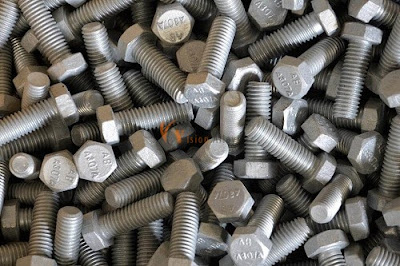Choose Best Stainless Steel Fasteners
Stainless Steel Fasteners
Although stainless steel fasteners are sometimes misunderstood in terms of material compatibility, performance, and availability, they are required for construction applications largely due to their resistance to corrosion.Many individuals can identify a stainless steel fastener, but they often struggle to understand what grade is required and how the fastener could function in the application.
What is Stainless Steel?
Typically, a class of iron-based alloys with a minimum of around 12 percent chromium are referred to as stainless steel. Similar to pure chromium plate used on car trim, it is essentially this chromium that provides steel its ability to resist corrosion when exposed to the elements. Chromium oxide, an extremely thin passive layer that is invisible, self-forming, and self-healing, is created when chromium combines with oxygen. Different quantities of additional elements are added to improve corrosion resistance, workability, and strength. Red rust resistance is often better in stainless steel grades with more chromium (iron oxide).
What Grade of Stainless Steel Do We need?
The 18-8 (300 series) SS Fasteners and 400 series are the two most often used varieties of stainless steel fasteners. The 18-8 series has the best corrosion resistance and ductility out of the two. One of the most misunderstood stainless families is that of types 302, 304, 305, and 316. Each grade provides corrosion protection that is essentially the same, but they all function differently when it comes to installation and resistance to chemical assault. These grades rely on cold working to enhance strength since they cannot be heat treated.
Type 302 is one of the more widely utilised grades and is frequently used in sheet metal and machine screws. Despite the remarkable corrosion resistance offered by this grade, it does not work-harden sufficiently to generate the thread hardness needed to reduce thread rollover brought on by tapping high-tensile or thick steel.
When type 305 is employed, the identical issue arises. Early in the 1970s, a specific modified 304 stainless steel material was created with the intention of using it largely in the metal building sector to minimise the number of thread failure. This particular type of 304 stainless steel is harder and, as is its wont, work-hardens throughout the manufacture of the fastener. It has nearly equal corrosion resistance and tensile strength to 302 and 305, and when being cold worked, it acquires a minor magnetic quality.
Self-tapping screws made of 304 stainless steel are widely available. The right hole size must be used when utilising any self-tapping fastener in order to maximise performance and reduce thread rollover. Usually, they are plated to offer more lubricity during tapping and decrease thread failure. To maintain thread integrity and holding power, an installation speed of 1,000 rpm or less is necessary.
Additionally offered in 304, self-drilling fasteners can drill steel by having a hardened carbon steel drill tip soldered to the screw shank. These fasteners are frequently utilised in panel applications as well as in aluminium framing. They come in a huge variety of sizes and skull shapes. To reduce thread rollover once again, slower speed screw-guns are needed.
The 316 grade of stainless steel from the 300 series was initially created for applications using sulfuric acid. In extremely corrosive applications, this grade's increased molybdenum concentration offers further corrosion protection, and it also performs well in chloride-type situations. Self-tapping screws are the most common kind of this grade.
Fasteners made of 410 stainless steel fasteners are frequently chosen for less demanding applications. They come in a range of diameters and lengths and are available in self-tapping and self-drilling types. Fasteners made of 410 stainless steel offer good corrosion resistance in mellow conditions like those seen in light industrial settings. Due to its reduced chromium concentration (relative to 18-8 grades), 410 may exhibit red rust in some applications. It will nonetheless rust, but considerably more slowly than carbon steel. As was already noted, the substance that shields the surface and ensures corrosion resistance in typical atmospheres is chromium, in the form of chromium oxide.
What Grade of Stainless Fastener?
It's crucial to keep in mind that every metal and alloy will corrode in a certain environment. By selecting materials that are close to one another on the galvanic chart, you can reduce the possibility of a galvanic reaction. To help with the decision, we advise consulting a corrosion expert. In comparison to carbon steel fasteners, stainless steel fasteners provide significantly more protection against red rust. When used properly, grades 304 Stainless Steel Fasteners or 410 Stainless Steel Fasteners will offer many years of long-life service.
If you are looking for the best quality of Stainless Steel Fasteners Click below. We are a prominent Stainless Steel Fasteners Manufacturer in India.



.png)
Comments
Post a Comment